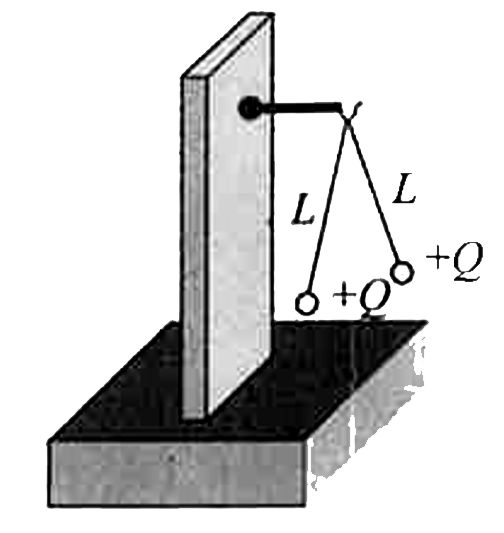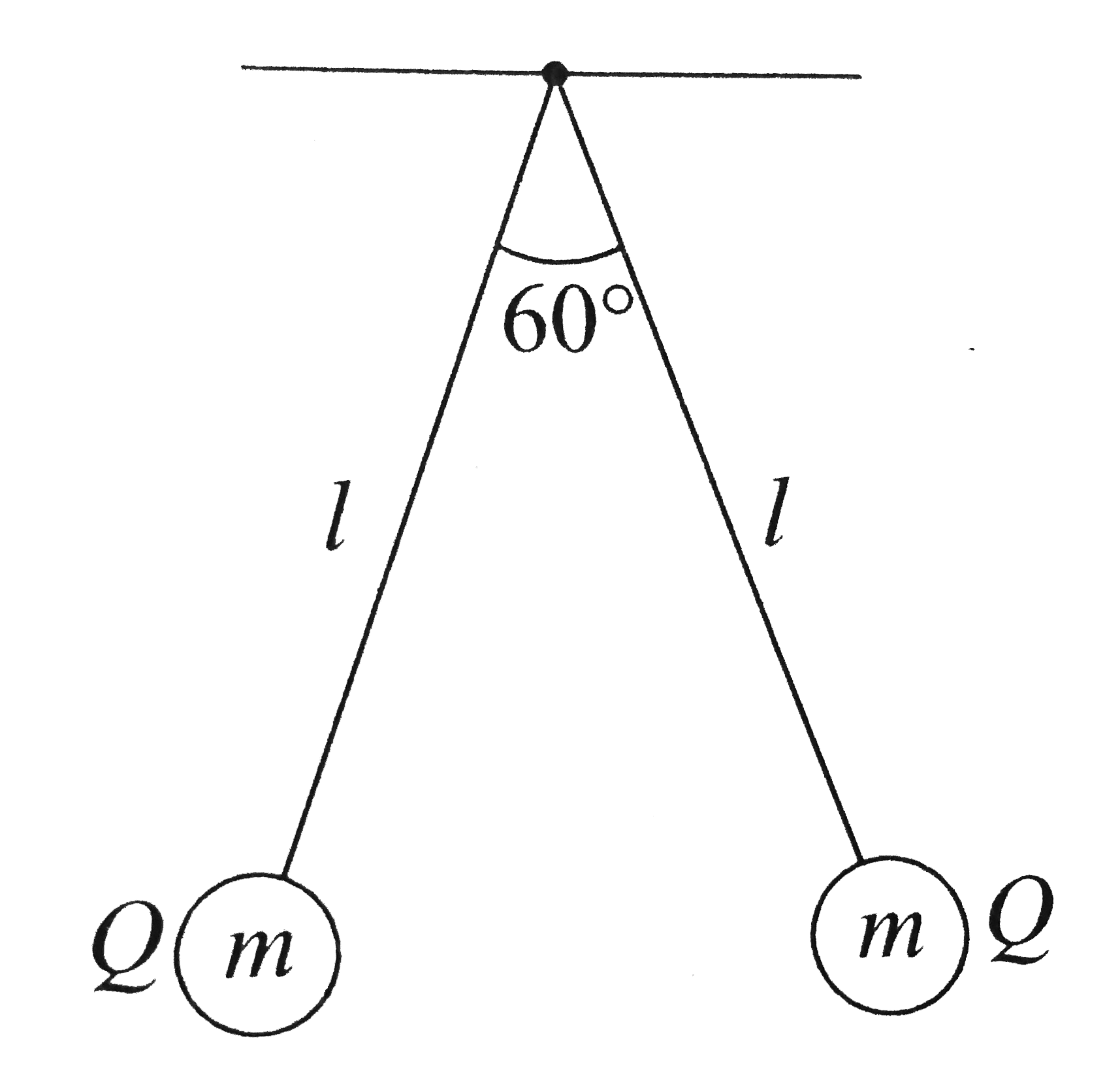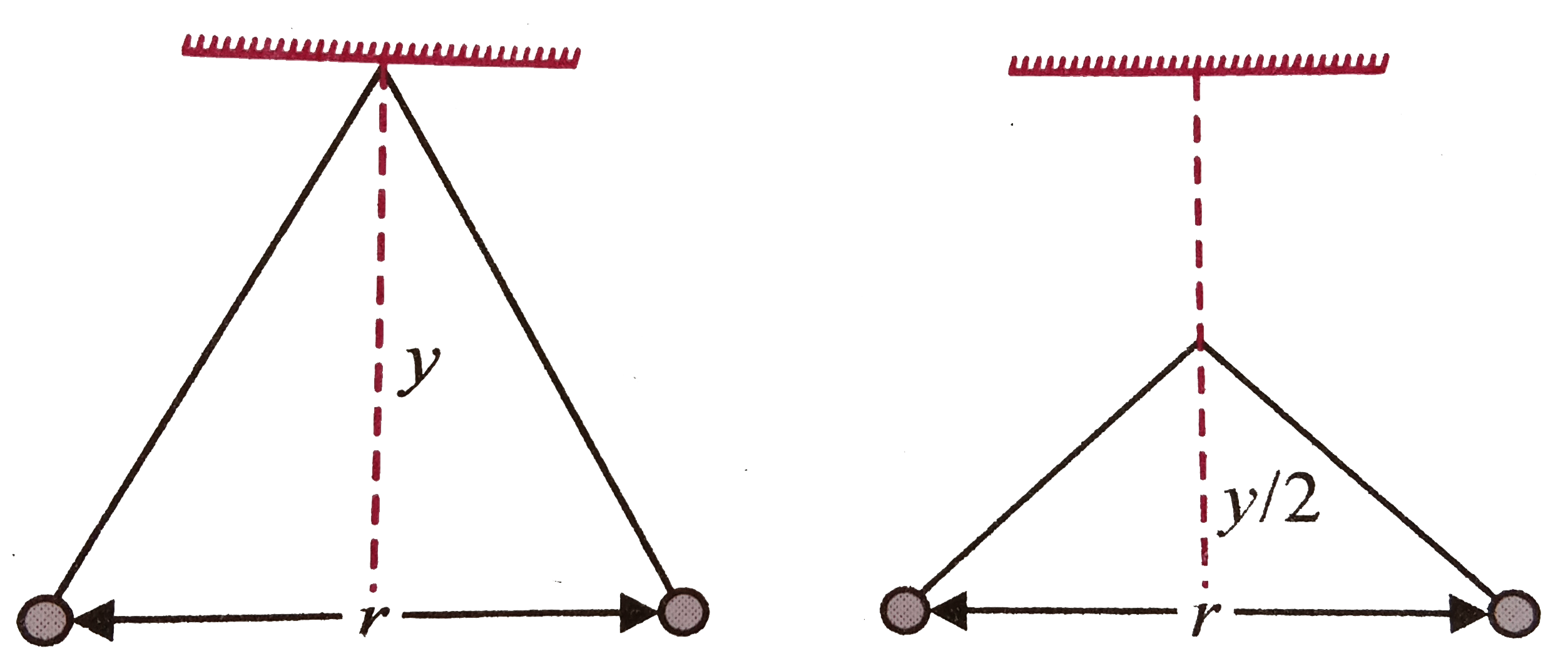Two small balls having equal poistive charges Q( coulomb) on each are suspended by two insulating strings of equal length L(metre) from a hook fixed to a stand. The whole set up is taken in a satellite into space where there is no gravity (state of weightlessness). The angle between the two strings is...............and the tenison in each string is...................newtons.
Where there is no gravitational force, then in this case only electrostatic force of repulsion is acting which will take the two balls as far as possible. The angle between the two strings will be . The tension in the string will be equal to the electrostatic force of repulsion, i.e.,
Topper's Solved these Questions
- MISCELLANEOUS VOLUME 3Book:CENGAGE PHYSICSChapter:MISCELLANEOUS VOLUME 3Exercise:True and False Type
Explore 5 Videos
- MISCELLANEOUS VOLUME 3Book:CENGAGE PHYSICSChapter:MISCELLANEOUS VOLUME 3Exercise:Assertion-Reasoning Type
Explore 1 Video
- MISCELLANEOUS VOLUME 3Book:CENGAGE PHYSICSChapter:MISCELLANEOUS VOLUME 3Exercise:Interger Answer type
Explore 20 Videos
- MECHANICAL PROPERTIES OF SOLIDSBook:CENGAGE PHYSICSChapter:MECHANICAL PROPERTIES OF SOLIDSExercise:Question Bank
Explore 4 Videos
- MISCELLANEOUS VOLUME 5Book:CENGAGE PHYSICSChapter:MISCELLANEOUS VOLUME 5Exercise:Integer
Explore 12 Videos
Similar Questions
Two identical balls having equal positive charge q coulomb are suspended by two in painting strings of equal length. What would be the effect on the force when a plastic sheet is inserted between the two?
View SolutionTwo small balls, each having charge q, are suspended by two insulating threads of equal length L fron a hook in an elevator. The elevator is freely falling. Calculate the angle etween the two threads and tension in each thread.
View Solution
Knowledge Check
Two small balls having equal positive charge Q (coulumb) on each suspended by two insulating strings of equal length L (metre) from a hook fixed to a stand. The whole set-up is taken in a satellite into space where there is no gravity (state of weightlessness). Then tension (newtons) in each string is:
AQ24π∈0L2BQ28π∈0L2CQ212π∈0L2DQ216π∈0L2Two small balls having equal positive charge Q (coulomb) on each are suspended by two insulated string of equl length L meter, from a hook fixed to a stand. The whole set-up is taken in satellite into space where there is no gravity (state of weightlessness). Then the angle between the string and tension in the string is
 A180∘,14πε0.Q2(2L)2B90∘,14πε0.Q2L2C180∘,14πε0.Q22L2D180∘,14πε0.QL4L2
A180∘,14πε0.Q2(2L)2B90∘,14πε0.Q2L2C180∘,14πε0.Q22L2D180∘,14πε0.QL4L2Two small balls having equal positive charge Q(coulomb) on each are suspended by two insulated string of equal length L meter, from a hook fixed to a stand. The whole gravity (state of weightlessness). Then the angle between the string and tension in the string is
 A180∘,14πε0⋅Q2(2L)2B90∘,14πε0.Q2L2C180∘,14πε0.Q22L2D180∘,14πε0⋅Q24L2
A180∘,14πε0⋅Q2(2L)2B90∘,14πε0.Q2L2C180∘,14πε0.Q22L2D180∘,14πε0⋅Q24L2
Two identical small bodies each of mass m and charge q are suspended from two strings each of length l from a fixed point. This whole system is taken into an orbiting artificial satellite, then find the tensio in strings
View SolutionTwo identical point charges q of mass m each are suspended through strings of equal length l from a common point of suspension. Find the charge q if angle subtended by the strings with the vertical is θ, when point charges are in a state of equilibrium.
View SolutionTwo small balls, each having equal positive charge Q are suspended by two insulation strings of equal length l from a hook fixed to a stand. It mass of each ball =m and total angle between the two strings is 60∘m, then find the charge on each ball.

View SolutionTwo identical small bodies each of mass m and charge q are suspended from two strings each of length l from a fixed point. This whole system is taken into an orbiting artificial satellite, then find the tensio in strings
View SolutionTwo path balls carrying eqaul chareges are suspended froom a common point by strings of equal length, the strings are rightly clamped at half the height. The equilibrium separation between the balls, now becomes :

View Solution
